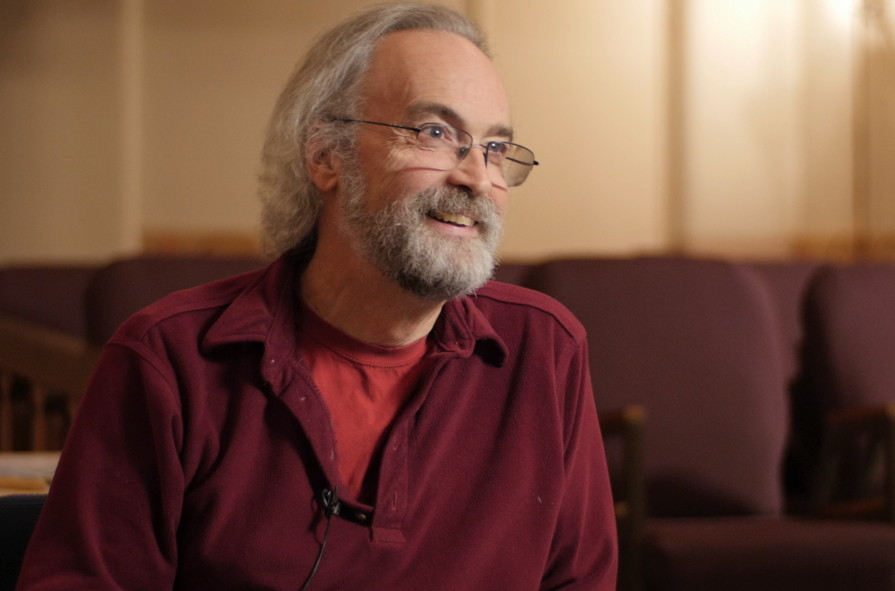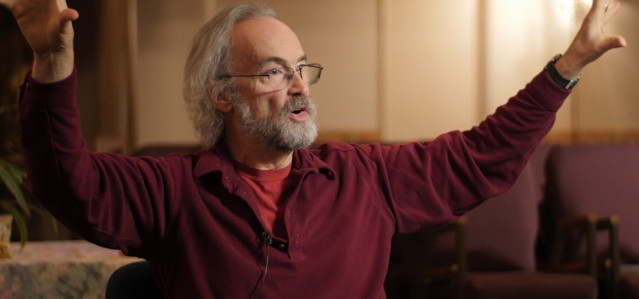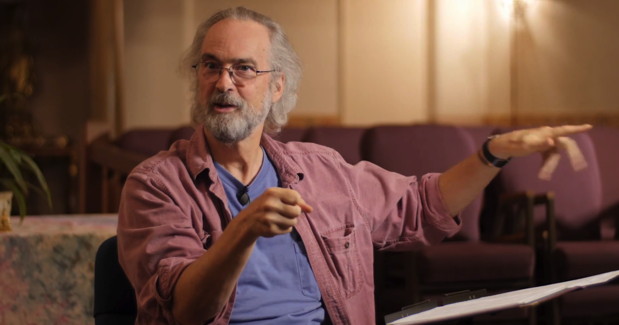
Simplicity Zen Podcast interview in March, 2023
Berry Crawford interviews Doug about growing up in Houston, New Jersey, Wisconsin, and California and what drew him to Buddhist practice. From there it moves into various topics pertaining the neuroscience of meditation, affective emotions and consciousness.

This was filmed on the Google campus on March 21, 2016: YouTube Video
When faced with difficulty, we instinctively tighten up. The tension focuses our attention onto the world around us to go after something we want or get away from something threatening. But sometimes there is no solution out there: There are no other jobs. The disease has no cure. The relationship strain is unresolvable. The friend who died just isn’t returning. These are the truly difficult times. To thrive during truly difficult times we have to turn our attention inward and learn how to be with the instinctual tightening in a relaxed and open way.
These guided meditations were record on Zoom during the COVIC pandemic.
YouTube Video from February 2021
YouTube Video from March 2021
These following nine dhamma talks were filmed by Adam Eurich during an 8-day Kindness and Wisdom Mediation retreat beginning on November 1, 2014. The links below take you to the unedited footage of those talks. Or you can go to the Easing Awake channel on YouTube to see a listing of all of them.
Beginning Instructions for Kindness and Wisdom Meditation: YouTube Video, Audio.
Kindness is an attitude of friendliness to living beings. Wisdom is seeing clearly and impersonally. Kindness without wisdom is not kind. Wisdom without kindness is not wise. These are not separate qualities but different ways of approaching a unified whole that could be called metta-panna or kindness-wisdom. Kindness and wisdom meditation uses two different practices that are deeply intertwined. This talk gives the details of how they work.
Morning Questions and Answers: YouTube Video, Audio.
A range of questions related to deeping meditation practice.
Ways of Viewing Hindrances: YouTube Video, Audio.
An aikido student on a Tokyo train encounters a belligerent drunk and an elderly gentleman. The story illustrates a few of the ways we relate to the distractions and distortions that arise naturally in the mind-heart. What we do with these “hindrances” has a profound effect on our meditation practice and life. If we view them as a problem to be defeated or fixed, life becomes difficult. If we view them with kindness, they cease to be a problem. This talk explores three ways of viewing them: (1) as mixed intentions, (2) as spiritual trainers with Asperger’s syndrome, and (3) as a split between self and other. It also explores the Upakkilesa Sutta where the Buddha spoke about 11 common hindrances. If we view the contents of the mind-heart clearly and impersonally, there are no hindrances.

Turning Toward: Four Ennobling Truths: YouTube Video, Audio.
Buddhism is not a religion, philosophy, or even spirituality as much as it’s a way of engaging life. It’s a way of looking with a quiet, unflinching smile at whatever comes along. It’s turning toward the waves that crash toward us. The Buddha described this as four ennobling truths: (1) Life is sometimes unsatisfactory; (2) The source of our experience of discomfort is craving (tanha), (3) When we abandon the craving, suffering ceases; (4) There is a path we can follow to cultivate wellbeing.
The Awareness Jhanas: YouTube Video, Audio.
In the earliest texts the Buddha described a path to awakening that goes through several stages called "jhanas." These are not the absorption jhanas that have been talked about in the West so often. Rather they are stages of deepening awareness. On this path, the meditation techniques change as we progress. They led to a powerful wellbeing that is more accessible than most people imagine. This talk traces this path from joy to peace to spaciousness to cessation to freedom.

Dependent Origination: YouTube Video, Audio.
Impersonal natural laws set the parameters within which we live. When we see these laws clearly, we see the impersonal nature of all phenomena. But many of these laws are so subtle and complex that it’s difficult to understand them. When we don’t understand, we take things personally and suffer. To help us understand how life works, the Buddha drew a map called "the laws of dependent origination." This talk explores how this map works in the nitty-gritty of life and in meditation. The handout mentioned in the talk can be found here: Dependent Origination Notes

It Ain’t Personal: Anatta: YouTube Video, Audio.
If suffering is the illness, the Buddha's diagnosis is sobering: the disease is incurable. Anguish is an inherent part of the relative world in which we live. So he proposed a radical solution. If we can't get rid of the disease, let's get rid of the patient. If there is no one to suffer, there is no suffering. Brilliant! But hardly the answer we were looking for. We shy away from the topic. Meanwhile, many of the difficulties we face as a species are rooted in a hyper-developed sense of self. This talk considers ways to take ourselves more lightly.
Compassion, Confession, and Forgiveness: YouTube Video, Audio.
With compassion, the place where the rubber meets the road is when someone who is suffering has done something wrong to bring it on themselves. The place where self-compassion is most difficult is when we are hurting because of something we’ve done wrong. To go deeply into compassion we must go deeply into forgiveness. And forgiveness without confession is tepid. So on the last evening before returning to our lives in the world, this talk explores compassion, confession, and forgiveness.

Right Speech, other precepts, and thoughts about going home: YouTube Video, Audio.
The 6Rs are a tool for meditation. In meditation, there is nothing actively to be done but deepen awareness. But in life in the world, sometimes we must engage actively. The 7Rs add an extra step that allows the 6Rs to be bought into an active life. On the last day of the retreat we discuss the 7Rs and 6 precepts in everyday life.